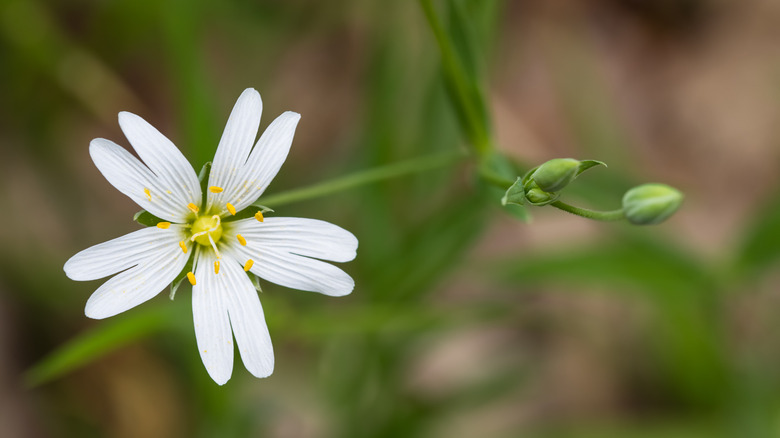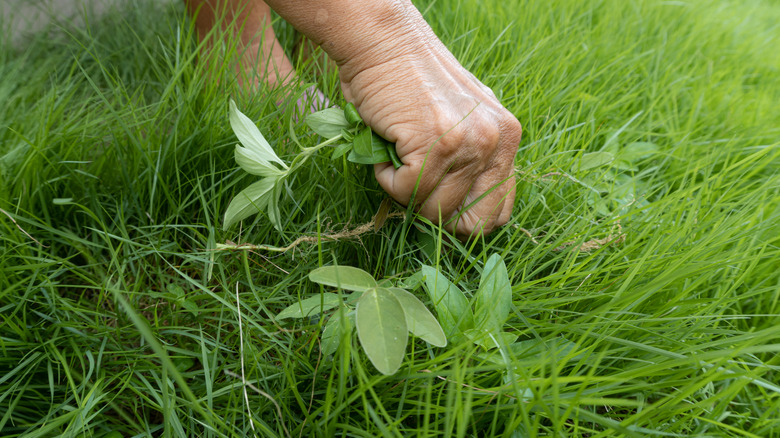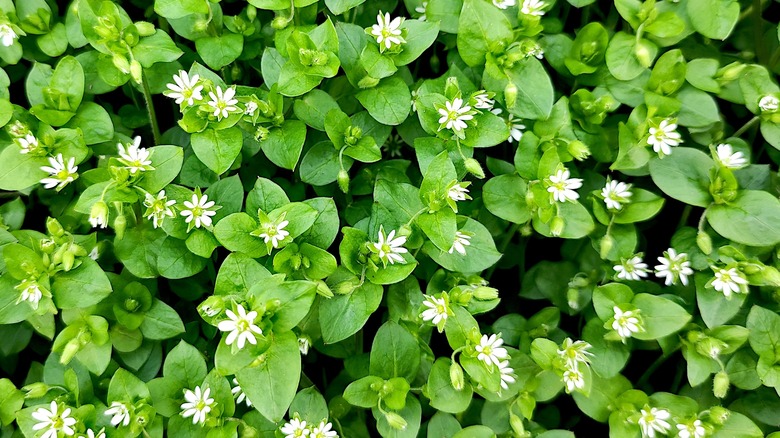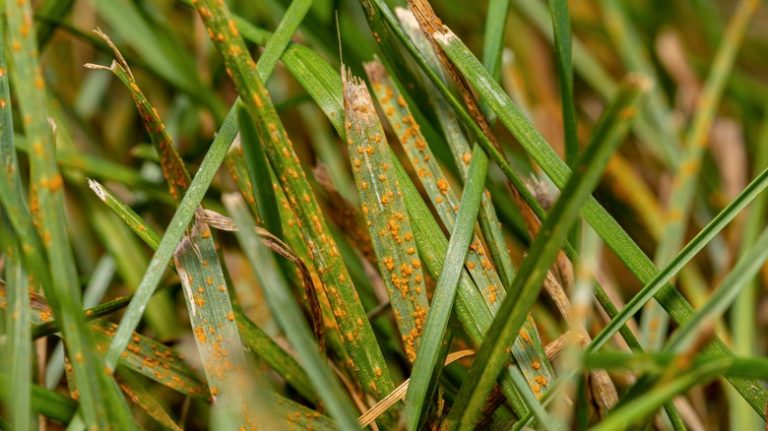When you are trying to establish a beautiful lawn that will be the envy of the neighborhood, you want lush, green grass that looks inviting. Even more important, you never want to see weeds. Often, applying a weed and feed treatment at the right time will help you accomplish both goals of strengthening the grass plants and eliminating the unwanted ones. Before you spread the fertilizer and herbicide granules, though, you should take inventory of the weeds that you see, as they can help you understand the soil health of the lawn.
One such plant is chickweed, which often grows in highly compacted soil that has excess nitrogen. It also may indicate that the soil is not draining properly, leading to excess moisture remaining near the top layers and allowing the chickweed to thrive. Compacted soil does not drain as well as airy soil, which explains why it retains moisture. It also doesn’t allow the soil to retain the oxygen that grass needs to be able to grow healthy.
If you see a thick clump of this plant in one area of your lawn or spread throughout the property, you can determine whether you need to attempt to loosen the soil through aeration across the entire yard or only in a small area. Knowing this could be the difference between needing to rent a powered aeration machine for the entire lawn versus being able to manually aerate a small section of the lawn.
How do I know if I have chickweed in my lawn?

Before taking any of these steps, it’s important to be certain that you are seeing chickweed and not something else in the yard. A type of weed other than chickweed may be appearing in your yard, meaning you may need to take different steps to improve the soil health of your lawn.
One distinctive quality of chickweed is the fine hairs that appear along the stem of the plant. Another quality is the tiny white flowers that appear as it blooms. These flowers have five petals, creating a shape like a star. Each petal has two clear lobes, resembling the wings of a tiny moth. You’ll typically see blooms between February and September, but the plant can bloom year-round. Other identifying qualities include small leaves in the shape of a teardrop or egg and a thick appearance. If left alone, it will appear to be almost a mat of plants, since the individual plants tangle among each other as they grow and spread.
Inside the continental United States, chickweed can grow almost anywhere other than the Southeast. It’s a winter annual broadleaf plant that can return year after year. You’ll find it in yards, but it can also appear in landscaping areas, flower gardens, roadsides, forested areas, and orchards.
Should I kill chickweed if I see it in my lawn?

After you identify the chickweed and figure out what it’s telling you about your lawn’s health and the health of the soil, you certainly can get rid of the chickweed, if desired. Although some people may leave it in place, especially if they have chickens on the property, as chickens and other birds can eat it, the chickweed will spread and choke out more desirable grass plants. It can take over both lawn and garden spaces, largely because of the way it grows into thick ground cover. It also provides a place for unwanted insects to thrive.
You can pull the chickweed by hand if it’s in a small area. Otherwise, a broadleaf weed and feed product should work to eliminate this particular weed. Because it often only reaches about 2 inches in height when growing in the yard, it’s difficult for a mower to cut it low enough to affect its ability to spread and thrive. In gardens where it has some shade, it may grow to up to 6 inches in height.
If chickweed is showing up in your yard in abundance, you also may want to apply a fertilizer that’s a little lower in nitrogen than what you normally use. Additionally, if the chickweed is primarily in a small area, you may be able to spread organic matter in this area to counteract some of the excess nitrogen and to make the soil less compacted.




